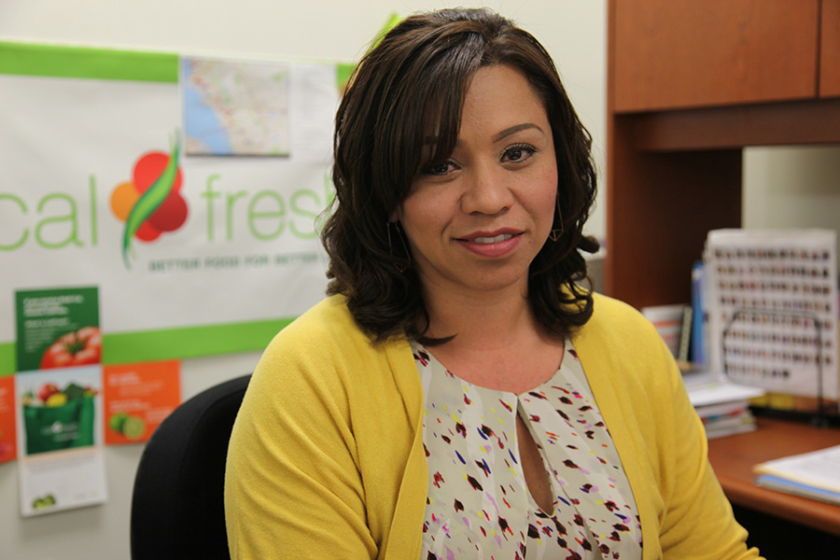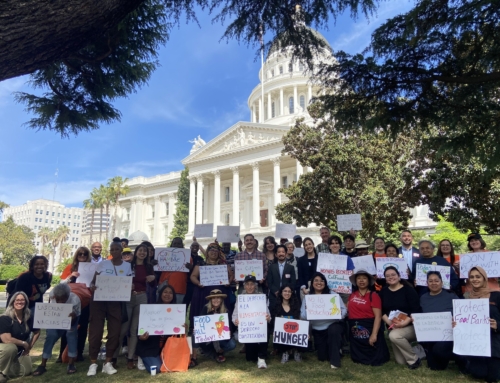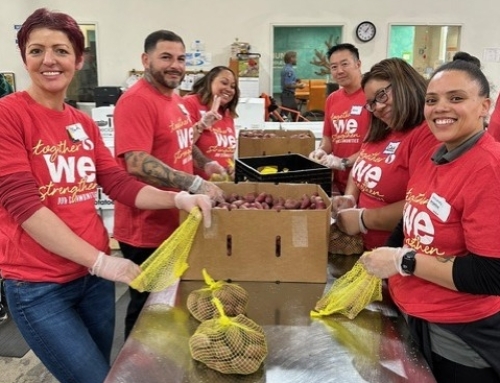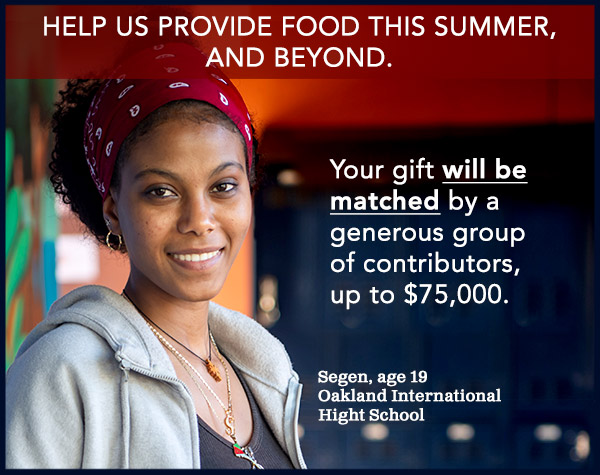In 2001, Liz Gomez was managing Alameda County Community Food Bank’s emergency food helpline, connecting people with same day food assistance. She often noticed clients calling the helpline often weren’t enrolled in CalFresh, a federal nutrition program which, at the time, was called food stamps.
“It became apparent people needed help applying,” Gomez said. Clients often didn’t think they were eligible for the program, and information wasn’t easily available in languages other than English. “We wanted to make sure people received help with food today, and also had access to food on a more consistent basis,” she said.
Gomez started promoting CalFresh through community outreach and began helping people fill out applications. Today, Gomez is the Associate Director of Client Services and the Food Bank’s CalFresh Outreach program has grown to become one of the state’s leading programs. The 15 person team helped 4,622 Alameda County households enroll last year.
“We wanted to make sure people received help with food today, and also had access to food on a more consistent basis.”
Despite numerous successes, Gomez says there’s still a lot of work to be done in helping more eligible people enroll and access fresh, healthy food. To finish off CalFresh Awareness Month, Gomez sat down to talk about the outreach team’s history and what’s next.
What has been key to CalFresh Outreach’s growth?
From the beginning, we knew we couldn’t do this alone— we got together with a group of service providers that included the City Of Oakland, various school districts, Women, Infants & Children offices, and of course the Alameda County Social Services Agency. We discussed challenges people had in accessing CalFresh and developed a comprehensive plan to tackle some of those barriers.
How have those partnerships helped you evolve?
Our key partnerships have gone a long way. For example, in 2007 I was still driving over to the Alameda County Social Services Department and dropping off clients’ applications every day. I thought, “There has to be a more efficient way.” We started working with the county to transition to a secure and private method of submitting applications electronically. At the time, we thought we’d be submitting no more than 50 per month. Today, we submit over 500 applications per month, all of which are about 90 percent complete. About 85 to 90 percent of the applications we submit are ultimately approved. After the county office receives the application, it is assigned to an eligibility worker and they complete the enrollment process.
Only 66 percent of eligible Californians are enrolled in CalFresh—one of the lowest participation rates in the country. Why is that?
California is a big state with 58 counties, and there isn’t a central database like there is in other states. This means that even small changes, including policy and programmatic, can be a cumbersome process.
“It takes a lot of education to dispel misconceptions and myths that exist around CalFresh.”
There are also some complicated rules in California. For example, if an older adult or a person with disabilities receives Supplemental Security Income (SSI) they aren’t eligible for CalFresh. Again, this is unique to California, and the different rules make eligibility more complicated. Language barriers also exist, especially in Alameda County, though we offer our services in English, Spanish, Mandarin, Cantonese, and Vietnamese.
Plus, there is still stigma around public benefits. It takes a lot of education to dispel misconceptions and myths that exist around CalFresh. A lot of our outreach work is about putting the right messaging in place and educating people on the facts.
How does your team overcome those barriers?
Our marketing strategy is research-based. We’ve learned which attitudes and beliefs keep people from applying for the program.
What have you found?
Out of a survey of 500 residents, the top two motivators for someone to apply are the direct benefit on a household’s overall budget, followed by the benefit of having access to more food. So our materials emphasize how CalFresh can help you stretch your food budget and buy more fresh fruits and vegetables.
We also did a mapping study—many of our campaigns focus on zip codes where there are a higher proportion of households who aren’t enrolled in the program.
What’s next for the CalFresh Outreach Team?
We we want to reach as many people as possible so we have to get creative. Beyond grassroots outreach, we also coordinate a comprehensive outreach and marketing campaign, which includes online digital ads, marketing at the DMV offices, direct mail campaigns, and are developing a mobile app to help facilitate referrals for CalFresh and emergency food. We’re also continuing to train other community agencies about the basics of CalFresh and recruiting partner agencies to engage in this effort. We’ve always needed to think outside the box when it comes to strategies that help more people apply and access fresh, healthy food. We’ve come a long way, yet there is still so much more to do to connect people with food assistance.
Learn more about the Food Bank’s CalFresh Outreach program.





